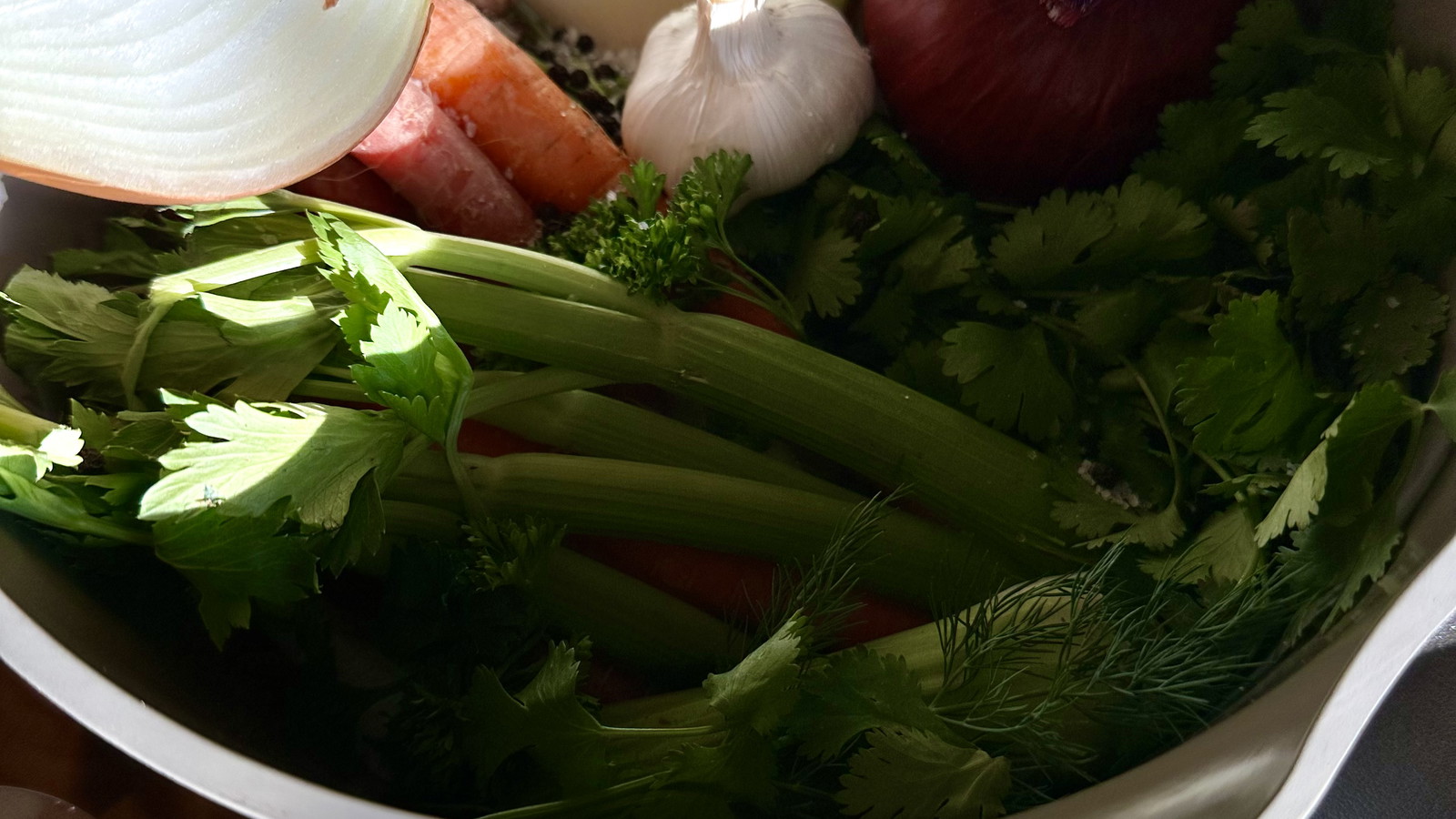Basic Vegetable Stock
Share
Vegetable stock is one of those quiet kitchen essentials that makes everything taste better. This homemade version is aromatic, richly layered and incredibly easy to make no fancy ingredients required. It’s also a great way to reduce waste by using up veggie scraps and herbs that might otherwise be tossed.
Perfect for everything from soups and risottos to grains and sauces, it’s the kind of staple you’ll always want on hand.

Why Make Your Own?
-
Better Flavor – Fresh vegetables, herbs and spices deliver far more depth than boxed broth.
-
Zero Waste – Turn peels, stems and scraps into something useful. Keep scraps in zip-lock in freezer for quick use.
-
Versatile & Freezer-Friendly – Ideal for plant-based cooking, with endless uses.

How to Use It
-
Soups & Stews – The perfect foundation for any comforting bowl.
-
Rice, Quinoa, & Grains – Cook grains in stock instead of water for more flavor.
-
Sauces & Gravies – A rich, plant-based substitute for meat-based stocks.
-
Ramen, Stir-Fries, & Curry Bases – Adds umami to globally-inspired dishes.
-
Braised Veggies or Beans – Infuses plant-based dishes with subtle depth.
Pro Tips
-
Save Your Scraps – Onion skins, carrot ends, celery tops, mushroom stems they all work.
-
Roast Veggies First – Optional, but roasting adds even more flavor.
-
Don’t Overboil – Simmer gently to keep the broth clean and balanced. Low and slow.
-
Freeze in Portions – Ice cube trays or freezer-safe jars make it easy to use just what you need.
Rheal Kitchen Talk
Homemade vegetable stock is one of the easiest ways to stretch your groceries and boost your cooking. It’s perfect for batch cooking days or slow Sundays and it gives those tired carrots or onion ends a second life. You don’t need a recipe to get started just a big pot, water, and whatever scraps you’ve saved up.
It’s humble, but powerful. And once you start making your own, you’ll always keep a stash in the freezer.

